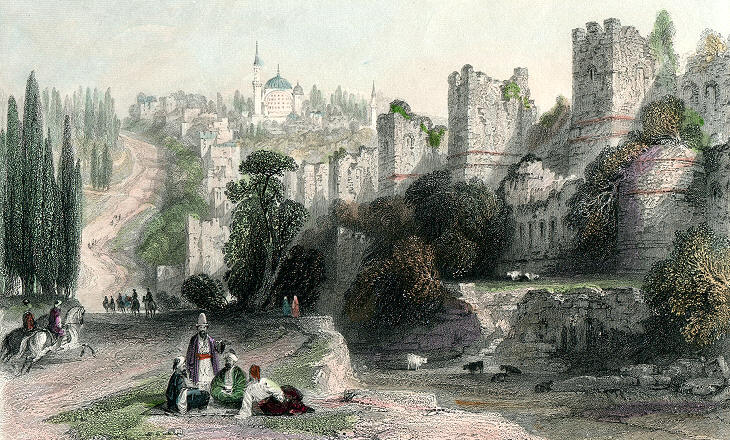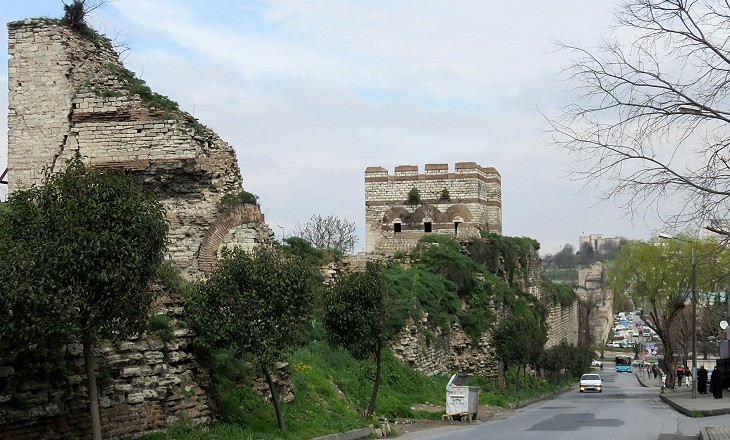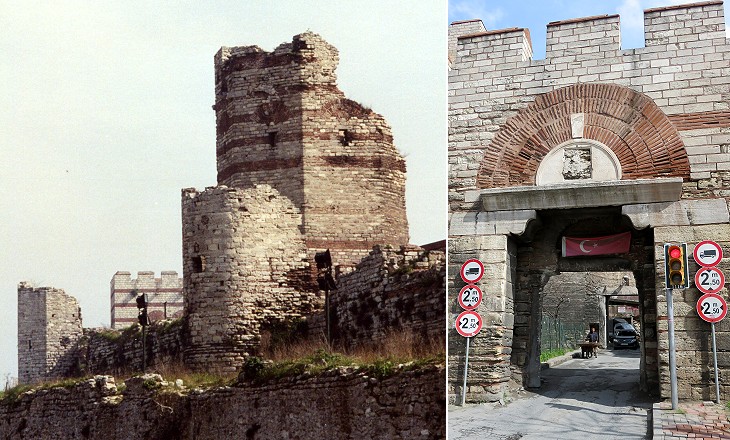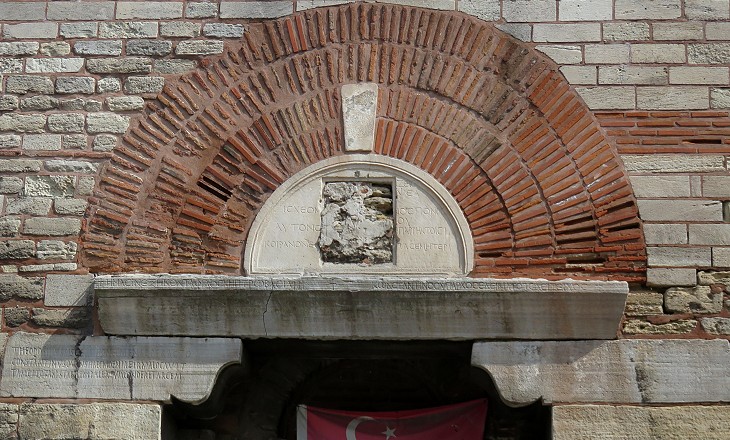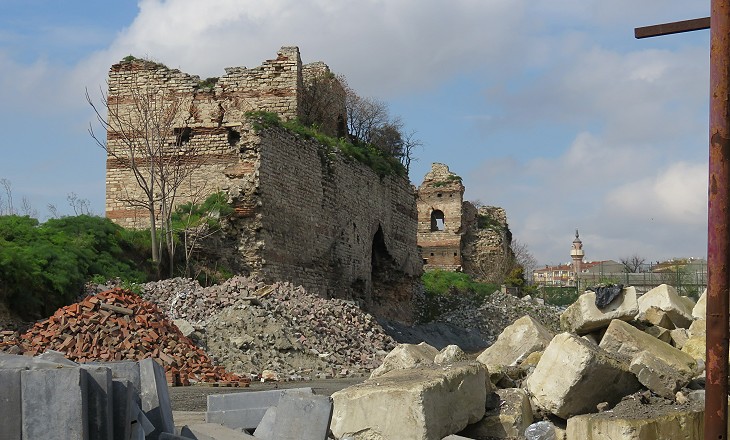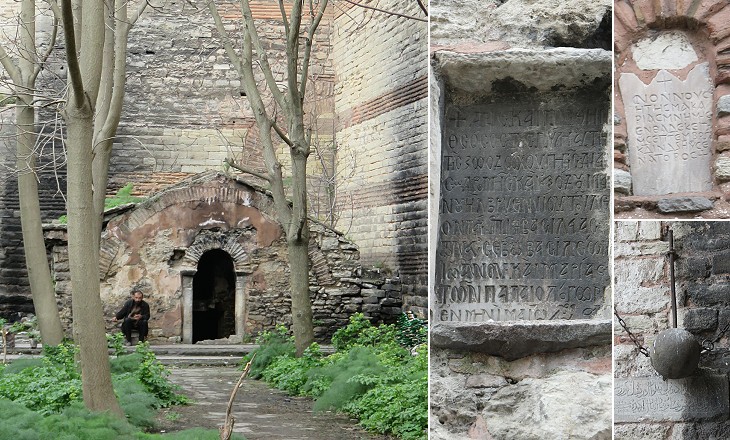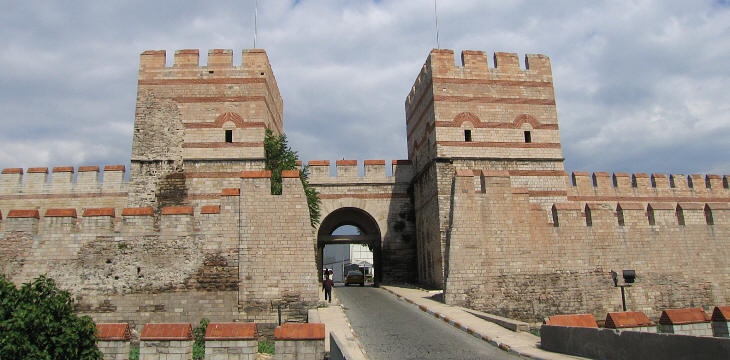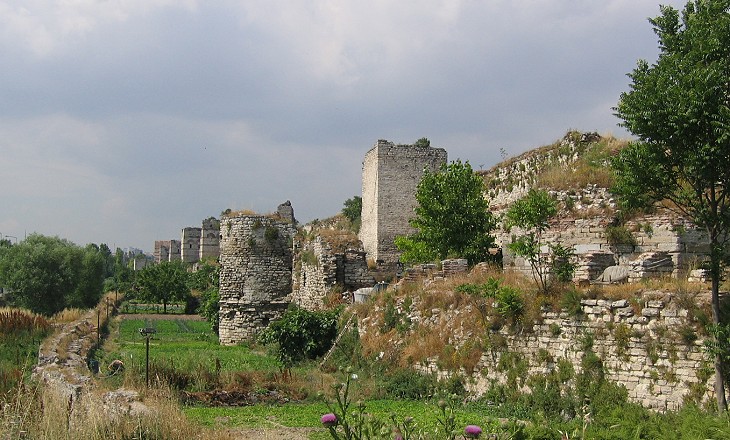  What's New! Detailed Sitemap All images © by Roberto Piperno, owner of the domain. Write to romapip@quipo.it. Text edited by Rosamie Moore. Page revised in August 2015. |
 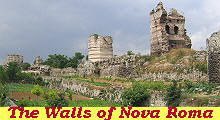 From Top Kapi to Yedikule Kapi From Top Kapi to Yedikule Kapi
You may wish to see an introductory page with a map of the walls first. A View from Top Kapi
Top Kapi
Top Kapi (Cannon Gate) was rebuilt after the siege and became the main overland entrance to Istanbul. Today the traffic goes through openings in the walls and the gate sees only a flow of pedestrians from the nearby dolmus (local small buses) station. It has such a quiet aspect that it is hard to believe it watched such crucial events as the 1453 Fall of Constantinople. A few traces of the old decoration are still visible.
The cannon to which the gate owes its name was built by Orban, an iron founder from Brasov in today's Romania. According to tradition he first offered his services to Emperor Constantine XI and then to Sultan Mehmet II. His largest cannon was called basilica (very large church) by the Greek defenders of Constantinople because of its size. It was a bombard, a large calibre artillery piece which threw stone balls. Mevlevihane Kapi
The walls between Top Kapi and Mevlevihane Kapi have some very evocative sights, not altered by improper restoration. Mevlevihane Kapi owes its name to a tekke, a Dervish monastery which stood in its proximity. The Dervishes are followers of the teachings of Mevlana Jalal-ad-Din.
The gate is flanked by two large towers, one of which is called "Tower of Constantine" because of two inscriptions celebrating the prefect Constantine who built it in 447. One of them is written in Latin and says: By the command of Theodosius, Constantine erected these strong walls in less than two months. Scarcely could Pallas (Athena) herself have built so strong a citadel in such a short time. Another small inscription on the lintel celebrates repairs made in 565. Towards Silivri Kapi
The beautiful towers in this part of the walls show their inner structure. The walls were made by alternate layers of stones and bricks. This was not for decoration, but to strengthen their resistance.
Silivri Kapi
Silivri Kapi shows the complete set up of the walls: moat, outer wall, inner wall. It is associated with a key event in the history of Constantinople. In 1261 a small body of Michael VIII Palaiologosí Byzantine troops managed to enter the city through a secret passage connecting this gate which had been left unguarded. Latin Emperor Baldwin II was caught by terror and he fled the city in disguise in a Venetian galley.
The gate is named after the small port of Silivri (ancient Selymbria) on the Sea of Marmara, 40 miles west of Istanbul. Its Greek name was Pege (Holy Spring), after a monastery by the same name outside the walls. Belgrat Kapi
Belgrat Kapi was named after Serbian artisans who were relocated to this part of Constantinople by Sultan Suleyman the Magnificent after he conquered Belgrade in 1521. It has been totally rebuilt (you can see it also in the background of this page). It is too new, too coloured: let's hope that future restorations of other parts of the walls will be limited to preserving their current state. It was closed from 1453 to 1886 and the current gate is not the historic one. Towards Yedikule Kapi
Eleven towers still in good condition and continuously connected by the walls offer this breathtaking view. Introduction to this section From the Golden Horn to Top Kapi From Yedikule Kapi to Mermer Kule The Maritime Walls Other pages dealing with Constantinople/Istanbul: Basic Istanbul Galata Clickable Map of Turkey showing all the locations covered in this website (opens in another window). |
